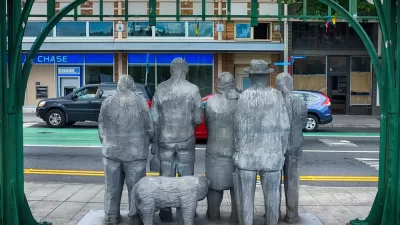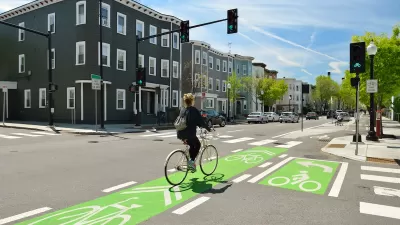Though the quick expansion of complete streets policies is worth celebrating, minority and low-income communities are still being left behind, and killed at a disproportionate rate.

Leah Binkovitz provides coverage of the recently released "Best Complete Streets Policies 2016" [pdf] report, recently released by Smart Growth America.
Previous coverage focuses mostly on the winners of the "best" title and the quick growth of complete streets policies around the country, but Binkovitz chooses a different frame through which to consider the findings of the study: equity.
Across the country, the annual report from Smart Growth America that documents and evaluates Complete Streets policies passed within the last year, found that Complete Streets efforts tended to concentrate in whiter localities. Massachusetts and Washington state alone accounted for 65 percent of all the policies included in the analysis. The report also found that the jurisdictions passing these policies tended to be wealthier. “The median income of communities that passed or updated a policy in 2016 was $59,347,” the report reads, “about 10 percent above the national average of $53,889.”
The other side of this equity coin is the tendency of pedestrian fatalities to occur in low-income communities, and people of color are more likely to be killed by drivers.
Binkovitz also notes that the city of Houston is one of the U.S. cities to add a complete streets policy in recent years, with mixed results in project delivery and increasing fatalities among pedestrians and bicyclists.
FULL STORY: COMPLETE STREETS POLICIES WERE CONCENTRATED IN WHITER, WEALTHIER AREAS IN 2016, ACCORDING TO NEW REPORT

Alabama: Trump Terminates Settlements for Black Communities Harmed By Raw Sewage
Trump deemed the landmark civil rights agreement “illegal DEI and environmental justice policy.”

Planetizen Federal Action Tracker
A weekly monitor of how Trump’s orders and actions are impacting planners and planning in America.

How Atlanta Built 7,000 Housing Units in 3 Years
The city’s comprehensive, neighborhood-focused housing strategy focuses on identifying properties and land that can be repurposed for housing and encouraging development in underserved neighborhoods.

In Both Crashes and Crime, Public Transportation is Far Safer than Driving
Contrary to popular assumptions, public transportation has far lower crash and crime rates than automobile travel. For safer communities, improve and encourage transit travel.

Report: Zoning Reforms Should Complement Nashville’s Ambitious Transit Plan
Without reform, restrictive zoning codes will limit the impact of the city’s planned transit expansion and could exclude some of the residents who depend on transit the most.

Judge Orders Release of Frozen IRA, IIJA Funding
The decision is a victory for environmental groups who charged that freezing funds for critical infrastructure and disaster response programs caused “real and irreparable harm” to communities.
Urban Design for Planners 1: Software Tools
This six-course series explores essential urban design concepts using open source software and equips planners with the tools they need to participate fully in the urban design process.
Planning for Universal Design
Learn the tools for implementing Universal Design in planning regulations.
Jessamine County Fiscal Court
Caltrans
Institute for Housing and Urban Development Studies (IHS)
City of Grandview
Harvard GSD Executive Education
Toledo-Lucas County Plan Commissions
Salt Lake City
NYU Wagner Graduate School of Public Service




























